Deciding which road pedals to buy can be a headache because there's so much choice, including a wide range of brands and cleat systems, but our buyer's guide tells you everything you need to know and offers options for all budgets.
Of the three points of contact between you and your bike (the saddle, handlebar and pedals), your pedals have the most work to do.
As well as keeping your feet in place as they spin at up to, and sometimes over, a cadence of 100rpm, they also have to provide a solid platform to push against, so you can propel yourself and your bike forwards.
All things considered, choosing the best road pedals for your riding is crucial, and influences your comfort and efficiency on the bike.
This is a selection of our favourite road pedals from those we've reviewed on BikeRadar. At the end of this article, you can read our buyer's guide to road bike pedals.
We also have a list of cheap bike pedals if you are on a tight budget.
SQUIRREL_PLAYLIST_10147528
Editor's note: This list was update on 3 January 2025.
Best road bike pedals in 2025, as reviewed by our expert testers
Shimano 105 R7000 pedals
SQUIRREL_TEXT_13086647
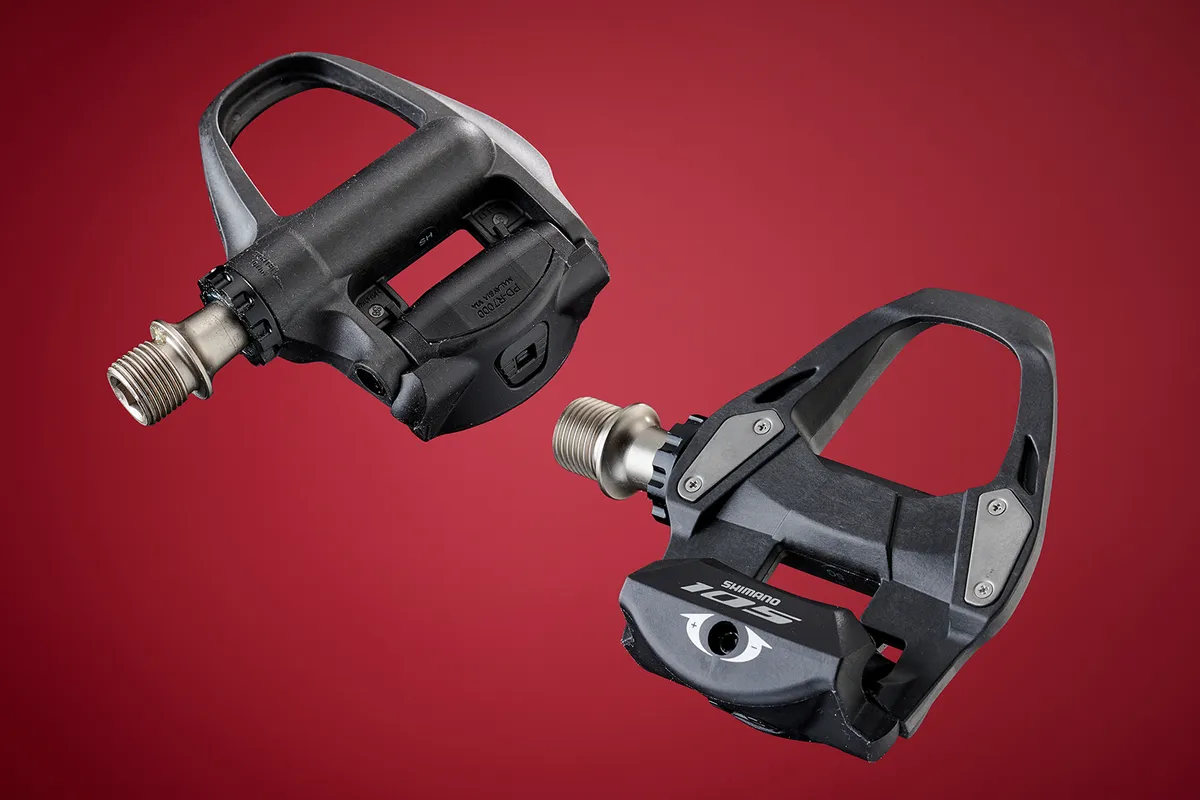
- £120 / $150 / AU$189 as tested
- Pros: Reliable and solid performer; adjustable float; excellent power transfer
- Cons: Not the lightest
Shimano's 105 R7000 pedals strike a good balance of weight to price. They are reliable and a solid performer, as you would expect from a Shimano product carrying the 105 name.
At this level, all Shimano SPD-SL pedals share the same body design, so you get many of the benefits of Shimano's higher-tier Ultegra and Dura-Ace designs.
One of these benefits is the wide body with stainless steel inserts. Together, these deliver a very secure and solid base for pedalling and excellent power transfer.
The pedals use Shimano's three-bolt cleat. They are available in three versions, offering different levels of float; these pedals are supplied with Shimano's yellow cleats with 6 degrees of float.
The release tension can be adjusted with an Allen key and the pedals hang at a nice angle for easy clipping in.
SQUIRREL_13086647
Time XPro 10 pedals
SQUIRREL_TEXT_13083821
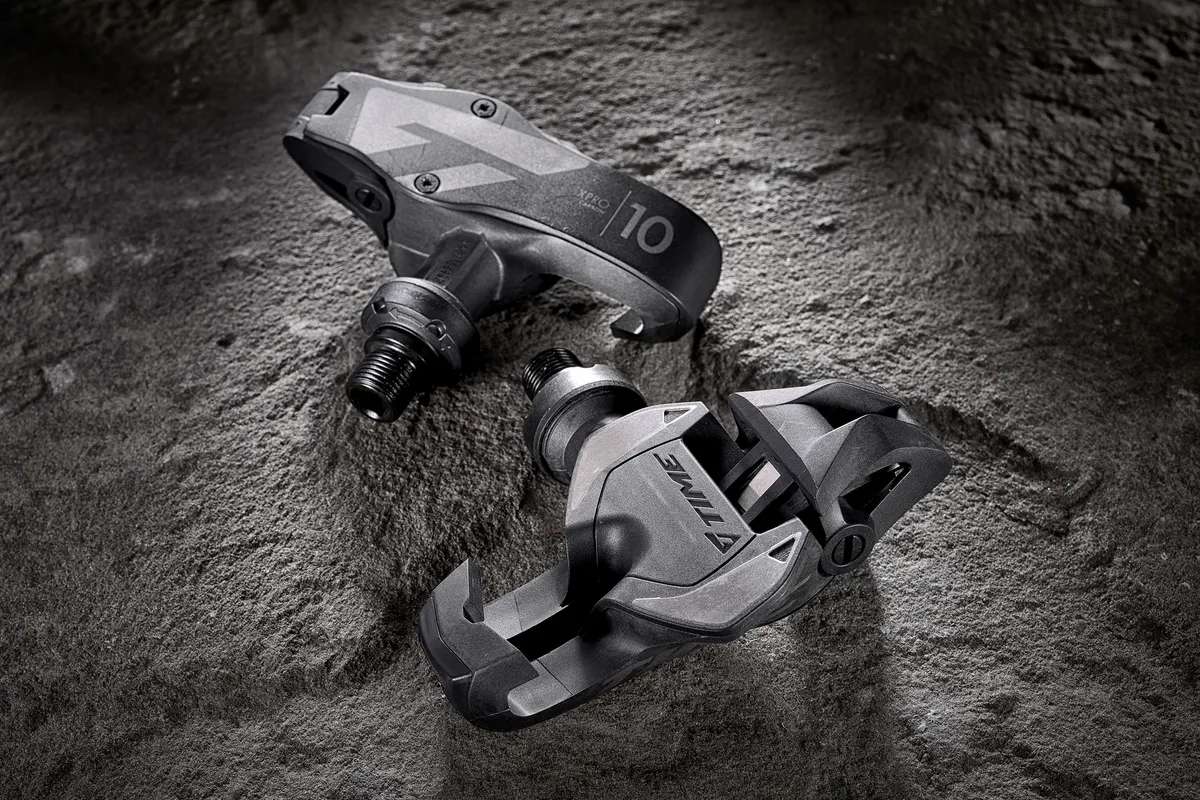
- £150 / $195 / AU$199.95 as tested
- Pros: Best road bike pedals for weight weenies and racers; stupendously light; very smooth action throughout the range of float
- Cons: Pricey
The XPro is an evolution of Time’s Xpresso pedal, with a hollow steel axle.
Central to the XPro design is its carbon flexion blade, which, unlike pedals that use a steel spring, keeps the clip mechanism open until cleat entry snaps it shut.
Without significantly more weight at the rear, the XPros don’t always hang tail-down, but are still easy to pick up, and the new cleats engage with more certainty.
If you really want to splash the cash, you could always go for the significantly lighter and significantly more expensive Xpresso 15. This has been replaced by the XPro 15, but the guts of the pedal remain largely the same.
SQUIRREL_13083821
Wahoo Speedplay Zero pedals
SQUIRREL_TEXT_13082275
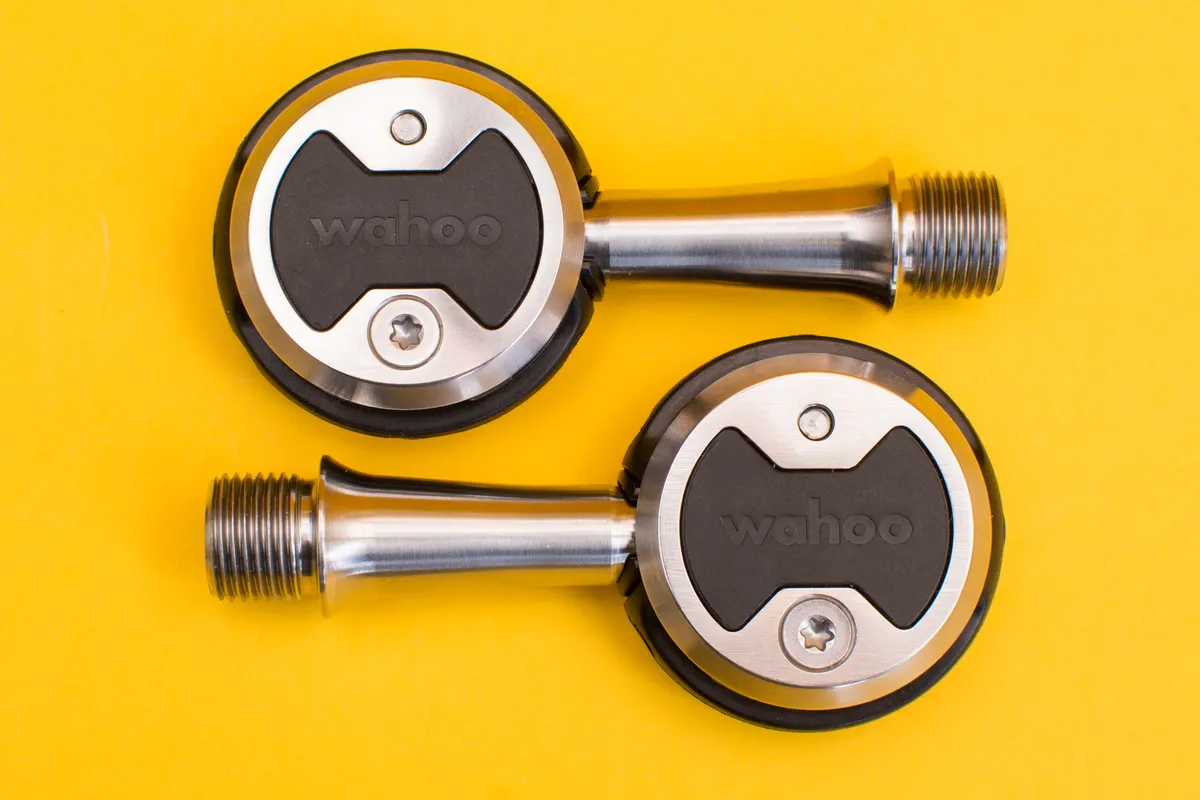
- £199.99 / $229.99 / €229.99 as tested
- Pros: Fully adjustable and double-sided entry; walkable cleats as standard; good cleat wear
- Cons: Cleats intolerant of mud
Wahoo's acquisition of Speedplay saw a complete revamp of Speedplay's pedal range, but these Wahoo Speedplay Zero pedals retain many of the features that made the original Zero an incredibly popular choice.
The new Wahoo-branded Zero still offers double-sided entry and comes with walkable cleats as standard, eliminating awkward pedal entry and minimising cleat wear and tear.
These pedals come with metal spindles, which should prove more durable than the chromoly spindle model, the Wahoo Speedplay Comp.
The float is non-centring, so there’s no spring pushing your feet back to centre.
This can take some getting used to but can prove comfortable because it lets your feet find their natural position. As a result, Speedplay/Wahoo pedals have long been a popular choice with riders who suffer from knee pain when cycling.
SQUIRREL_13082275
Look Keo 2 Max pedals
SQUIRREL_TEXT_13090960
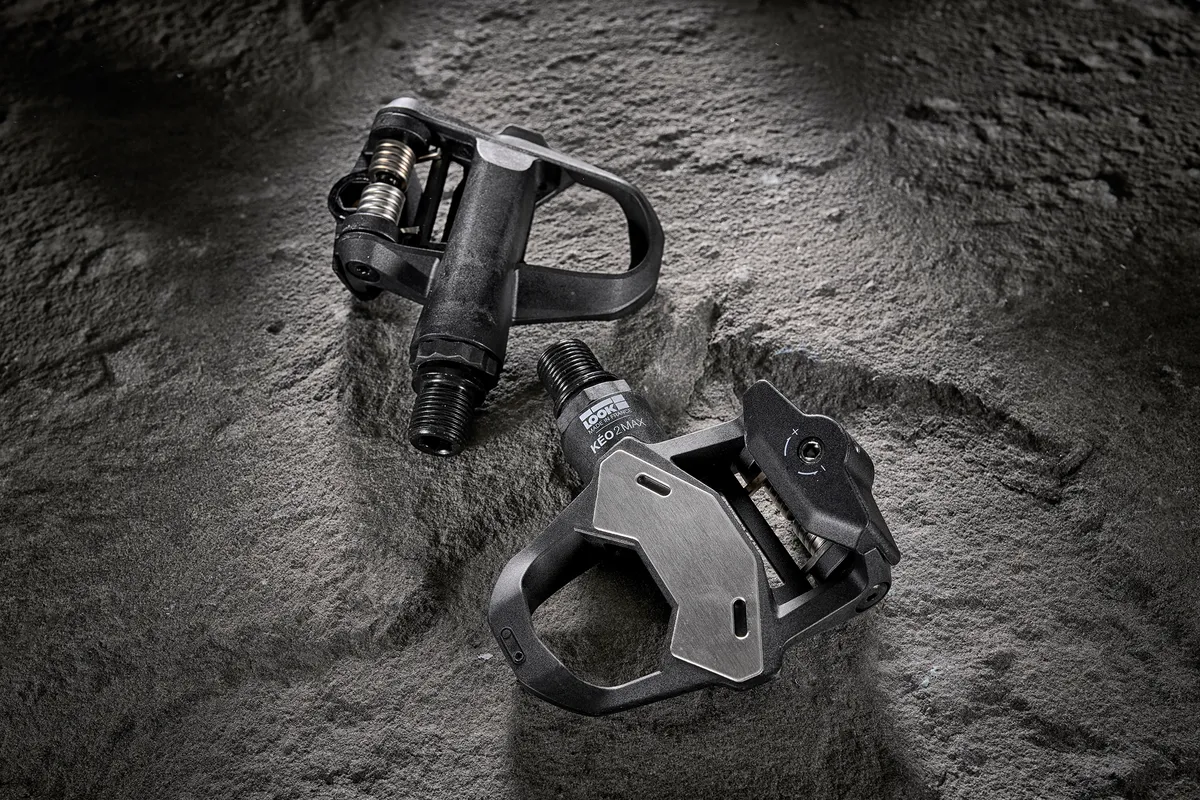
- £79.99 / $114.99 / AU$153.99 as tested
- Pros: Excellent pedalling stability; composite body; adjustable spring tension
- Cons: Squeaky cleats in the mud
These are Look’s mid-range version of the Keos and, with this new generation, they’ve continued to improve.
The lightweight composite body shape is more in tune with the Keo's more expensive siblings and has a serrated centre to help with shoe traction for ease of entry.
The pedals spin without issue on oversize chromoly axles on a combination of loose balls and needle cartridge bearings. Spring tension is adjustable and they come with Look’s 4.5-degree float cleats.
These offer impressive performance with no hotspots, are easy to use and are relatively light.
SQUIRREL_13090960
Look Keo 2 Max Carbon pedals
SQUIRREL_TEXT_13077778
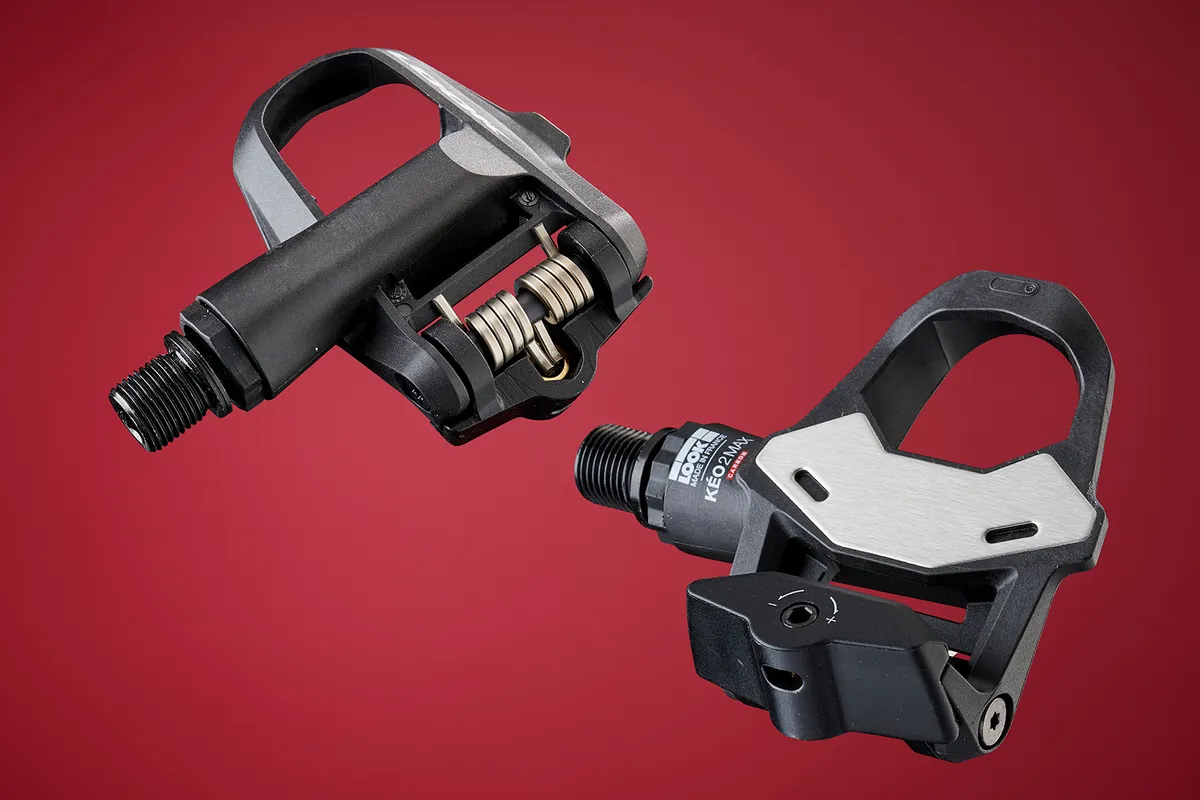
- £95 / $125 / AU$187 as tested
- Pros: Solid and reliable mid-range pedal; easy to use with plenty of adjustment; secure pedalling
- Cons: Minimal benefits over cheaper options in the range
The Look Keo 2 Max Carbon pedals sit mid-range for the iconic pedal brand and deliver its top technology to a more affordable price point.
The carbon body of the pedal is topped with a stainless steel plate that offers an increased surface area compared to the Look Keo Classic 2 model. This increased surface area is designed to improve power transfer.
Inside, a chromoly steel axle spins on both needle and ball bearings. Under the most powerful pedalling, the pedals spin smoothly.
Engagement comes with a satisfying 'click', and while cycling the connection is secure. Disengaging is similarly straightforward and audible.
The range of float (4.5 degrees) can be adjusted by swapping out the cleats.
SQUIRREL_13077778
Look Keo Blade Ceramic
SQUIRREL_TEXT_13154073
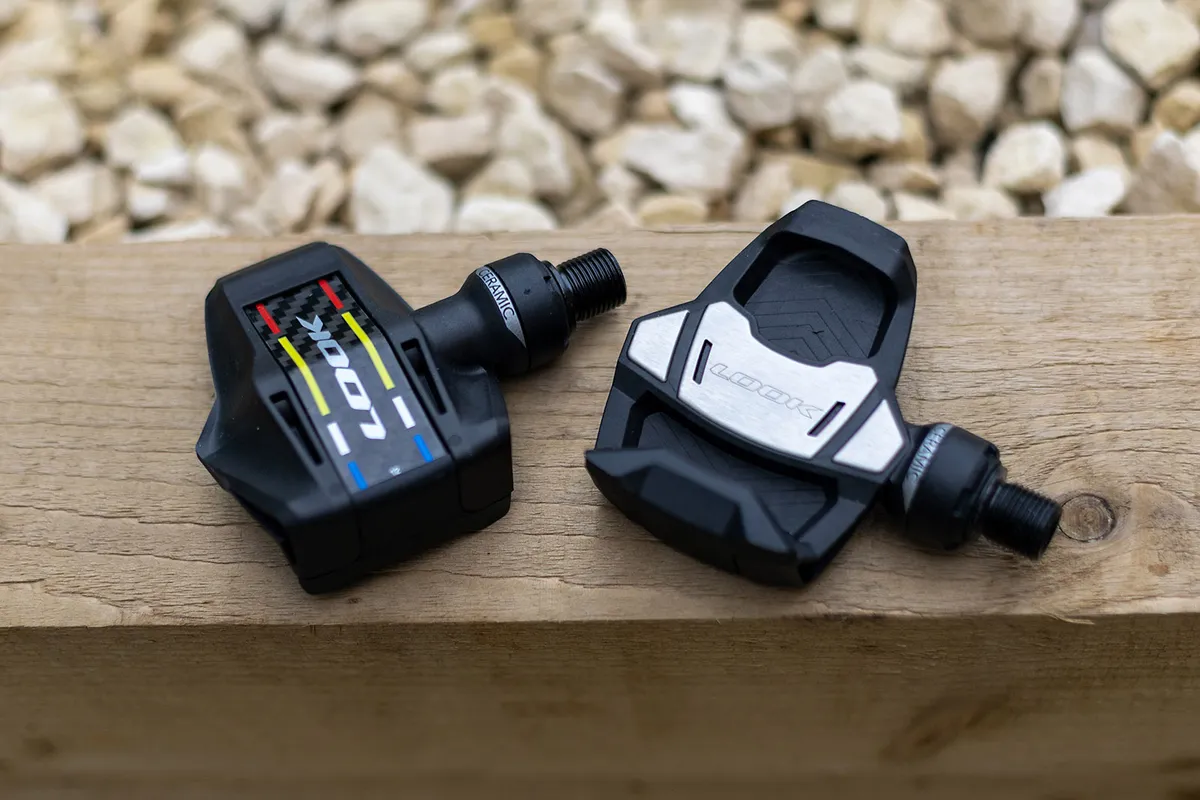
- £200 / $252 / €210 as tested
- Pros: Wide platform; secure with positive clip-in; Keo Grip cleats as standard
- Cons: Aero gains and ceramic bearings benefits aren't that noticeable
The Keo Blade Ceramic pedals offer great performance, but their gains are only minimal over the previous model.
We liked the stability provided by the pedals, with clipping-in now feeling very positive with a crisp click thanks to an updated mechanism.
The cleats provided are durable and they are on the lighter end of the spectrum, though it was hard to detect if the aero claims and ceramic bearings offered much benefit.
SQUIRREL_13154073
Shimano PD-R550
SQUIRREL_TEXT_13088198

- Pros: Stable platform; well-made; easily serviceable
- Cons: Not the lightest; cleats require changing to get the full range of float; axles need to bed in before they turn smoothly
The R550 is the second cheapest option in Shimano’s road pedal range, gaining a larger replaceable stainless steel body over the RS500. The pedals come with Shimano’s yellow SH11 cleats, offering six degrees of float. The black-finished steel axles are oversized and the pedals can be serviced using Shimano’s TL–PD40 tool.
In use, the R550s are almost indistinguishable from Shimano’s premium offerings, with the increased weight the biggest difference. The cleats wear well, although be mindful of catching the front edge of the cleat when walking. If you damage this, it can cause engagement issues.
Shimano’s system offers a more stable fit with its wide platform and secure engagement over the Look and Time options.
These pedals are overall a safe bet – they are very well made, user-serviceable and easy to get used to. Shop around and you can find replacement cleats at a discount too. The only con is that they are a few grams heavier than similarly priced competition, if that’s of concern.
SQUIRREL_13088198
Shimano Ultegra R8000 pedals
SQUIRREL_TEXT_13083800
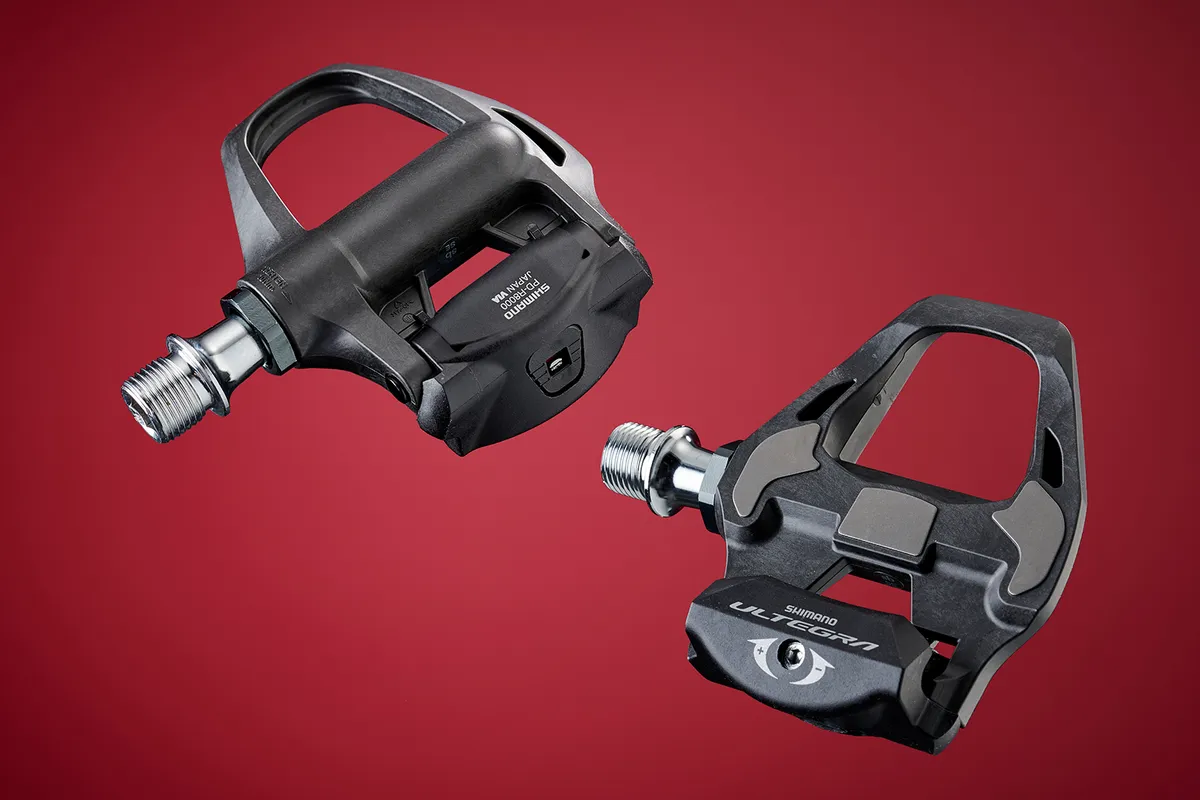
- £157 / $200 / AU$249 as tested
- Pros: Low-weight design; adjustable tension; great-performing pedals with plenty of float
- Cons: Pricey
The Shimano Ultegra R800 pedals hit all the right notes when it comes to performance. Like their equivalent groupset, the pedals are cheaper than the Dura-Ace pedals while being lighter than 105.
The pedals have a sleek carbon composite body with three non-replaceable stainless steel plates to provide durability, smooth float and power transfer.
Shimano provides its familiar yellow plastic cleats with these pedals, which provide a generous 6 degrees of float.
Clipping in is easy thanks to the pedals hanging nose-up. The force required to unclip is determined by an adjustable spring, so the pedals can be tweaked to suit different skill levels and abilities.
The price of the Ultegra R8000 pedals is high and if performance is what you're after, as opposed to weight savings, it might be worth considering the well-performing, but slightly heavier Shimano 105 R7000 pedals.
SQUIRREL_13083800
Time Xpresso 4
SQUIRREL_TEXT_13154414

- Pros: Lightweight; easy engagement; lots of float
- Cons: Cleat replacement; pricey
Time differs significantly from every other clipless pedal available with its engagement system, with its iClic design leaving the retention mechanism open when you’re not using it, much like a ski-binding. Push your foot into the pedal and it clamps you. In my view, it’s a much easier system to clip into.
The Xpresso 4 has a carbon-filled resin body, with the axle and bearing steel. Although Time suggests servicing isn’t necessary, the pedals can be disassembled and replacement bearing kits are available. You’ll need a specific tool though, which Time doesn’t supply or offer.
The pedals performed superbly. Engagement is easy, as is its solid-clicking exit. The cleat wear is on a par with Shimano, but they’re not as long-lasting as Look. We’d also always recommend opting for authentic Time cleats, rather than an after-market option.
SQUIRREL_13154414
Best power meter pedals
Here is BikeRadar's pick of the best power meter pedals.
Power meter pedals have grown in popularity due to the fact they can be easily switched between bikes, compared to chainring and crank-based power meters.
For our full round-up, head to our buyer's guide to the best power meters.
Favero Assioma Duo power meter pedals
SQUIRREL_TEXT_13098251
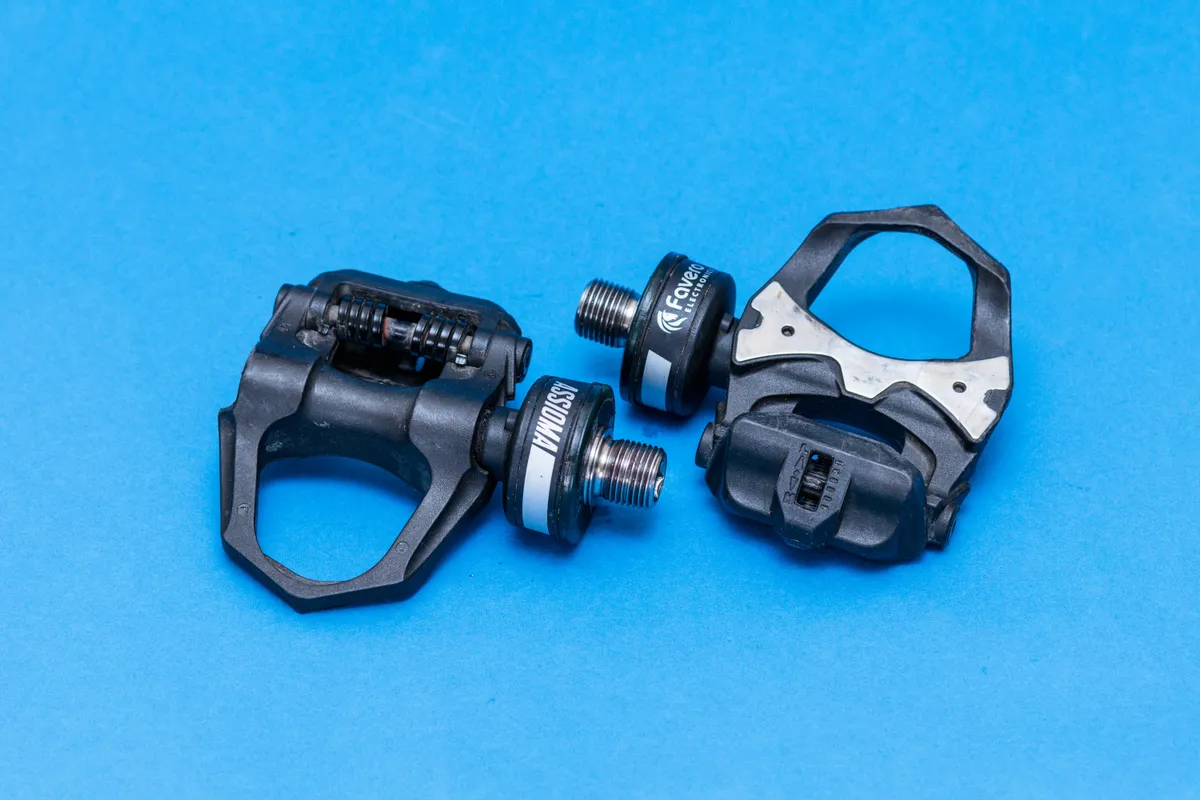
- £639 / $815 / €695 as tested
- Pros: Accurate readings and rechargeable battery; easy to swap between bikes; replaceable pedal body
- Cons: Cleats aren't the best; not the most refined looks
The Favero Assioma Duo power meter pedals are accurate and give consistent power readings for both sides thanks to the power-meter electronics housed in pods on each spindle.
The pedals have rechargeable batteries with a claimed 50-hour battery life. This is a real win when compared to other power meter pedals that rely on coin cell batteries.
The dedicated smartphone app enables you to update the pedal firmware, check battery levels and access product support.
Unfortunately, the cleats don't offer a huge amount of adjustability and are slightly slippery to walk on.
SQUIRREL_13098251
Garmin Rally RS200 pedals
SQUIRREL_TEXT_13085268
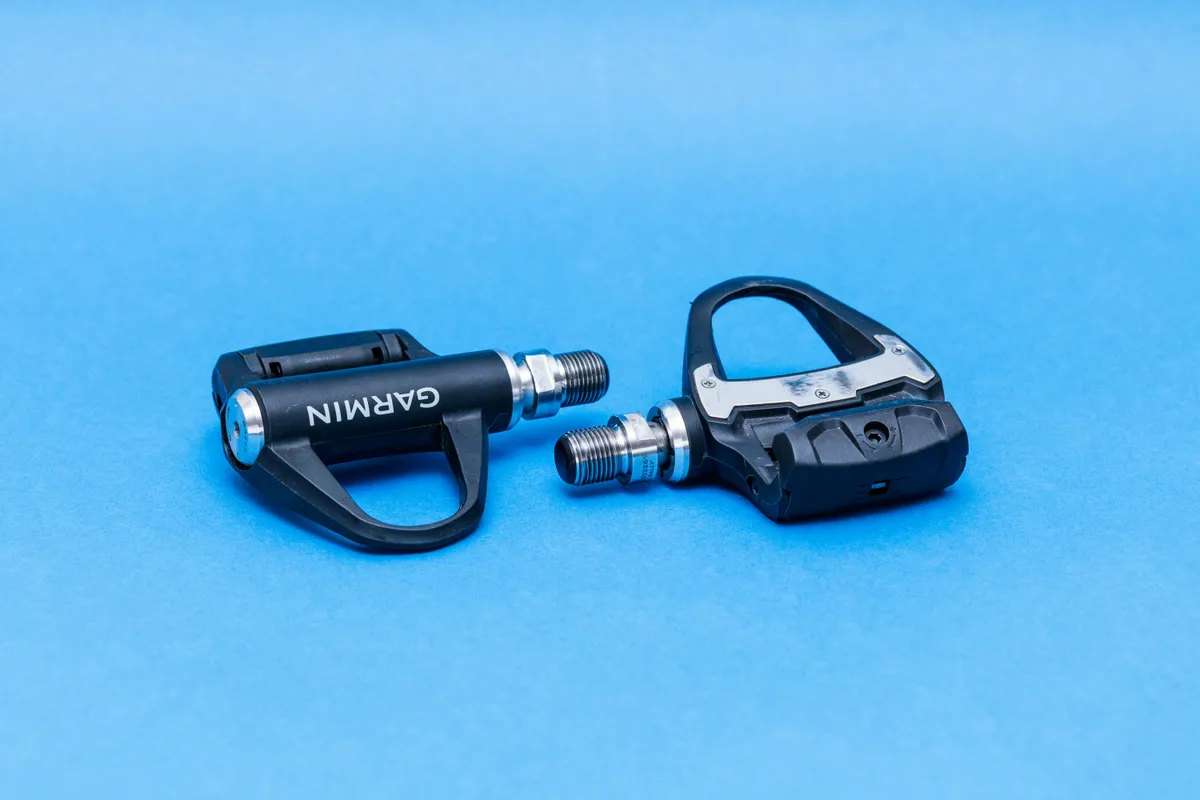
- £969.99 as tested
- Pros: Best-in-class cleat compatibility; easy installation; accurate power data
- Cons: Pricey
The Garmin Rally RS200 is the first native Shimano SPD-SL power meter pedal.
This is great for Shimano fans, but Garmin has gone one step further too. The pedal has changeable body options so it can be converted to a Shimano SPD pedal for off-road use on mountain and gravel bikes.
According to Garmin, this is what justifies the name change from its outgoing Vector pedals. Otherwise, the two pedals are very similar when it comes to their clean looks and power functionality.
The readings from the power meters are accurate, but testing found they could take a few seconds to start transmitting data. This will make little difference to the majority of cyclists but might be a concern for racers who take part in short-distance races (e.g. on the track or hill climbs).
The premium price tag might also be off-putting when other more affordable power meter pedals are available, but it is reflective of how the pedals are class-leaders in many ways.
SQUIRREL_13085268
How we test road bike pedals
We test road bike pedals out on the road to see how they perform in their natural element.
Long test periods enable us to identify any strengths and weaknesses a pedal may have and check for durability.
Our testers have reviewed hundreds of pedals, so know what to look for in a good pair.
Ultimately, our pedal reviews are based on the following criteria:
- Retention – does the pedal hold the cleat well?
- Platform stability – is the pedal secure when pushing power through it?
- Ease of action – how easy is it to clip in?
- Serviceability – can you replace and fix the pedals through their lifespan?
- Value for money – do the pedals represent a good deal compared to others on the market?
Why you can trust BikeRadar
BikeRadar has been an authority on bikes and cycling tech since its inception in 2007, delivering the world’s best riding advice.
We have experts testing all types of bikes, parts, clothing and accessories, from road, mountain and gravel bikes to commuting, bikepacking and electric bikes.
Our reviews are always editorially independent – with no exceptions. Our reviewers comprehensively test all products in the real world, always reflecting on performance, value and the wider market when delivering their verdicts and review ratings.
We have more than 15,000 product reviews available at your fingertips, as well as expert buying, maintenance, training, skills, health and fitness advice.
Our annual Bike of the Year test is an industry benchmark and the BikeRadar team consists of some of the most experienced riders and testers in the business.
What to look for when buying road bike pedals
What is a clipless pedal?
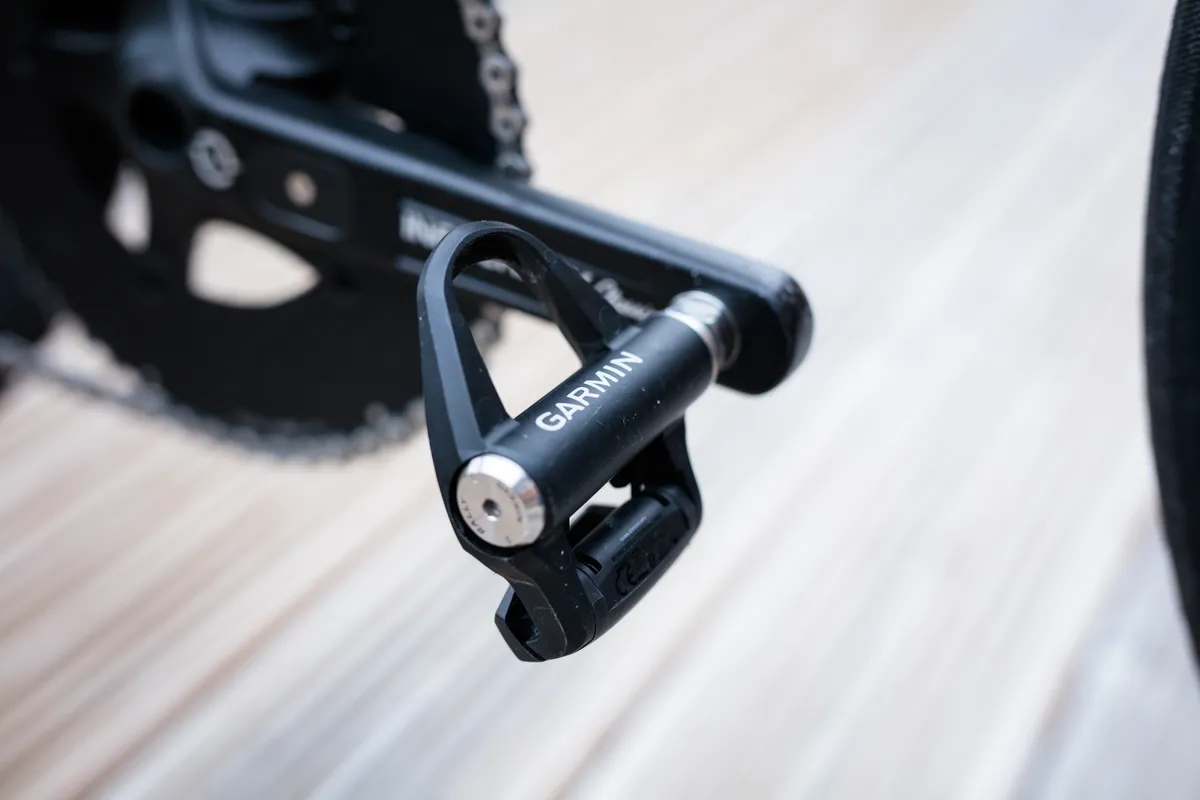
Road bike pedals are typically clipless pedals. Clipless (i.e clip-in) pedals evolved out of the old pedal and toe-clip setup that pretty much every road bike had until the late 80s/early 90s. Although you do 'clip in' to clipless pedals, they get their name from the absence of that traditional toe-clip.
While toe-clips rely on a clip and strap to hold the foot on the pedal, clipless pedals use a cleat that's fastened to the sole of the shoe and engages with the pedal mechanically, similar to a ski binding.
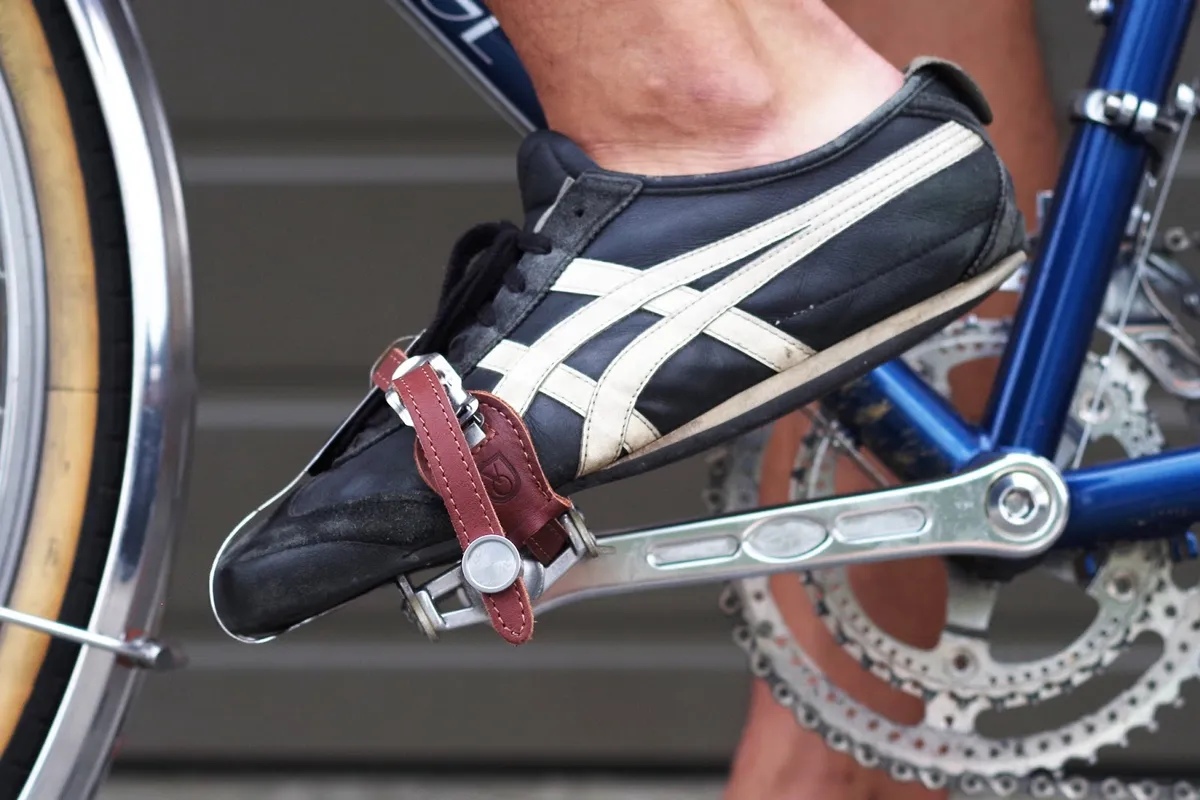
To clip into pedals, you step on the pedal's face and push your foot forwards or downwards to engage the cleat. To release your foot, simply rotate it outwards.
We have a guide on cycling with cleats that goes into more detail on the specifics of using clipless pedals.
Although most clipless pedals use similar technology, there are plenty of variations in design, construction and price.
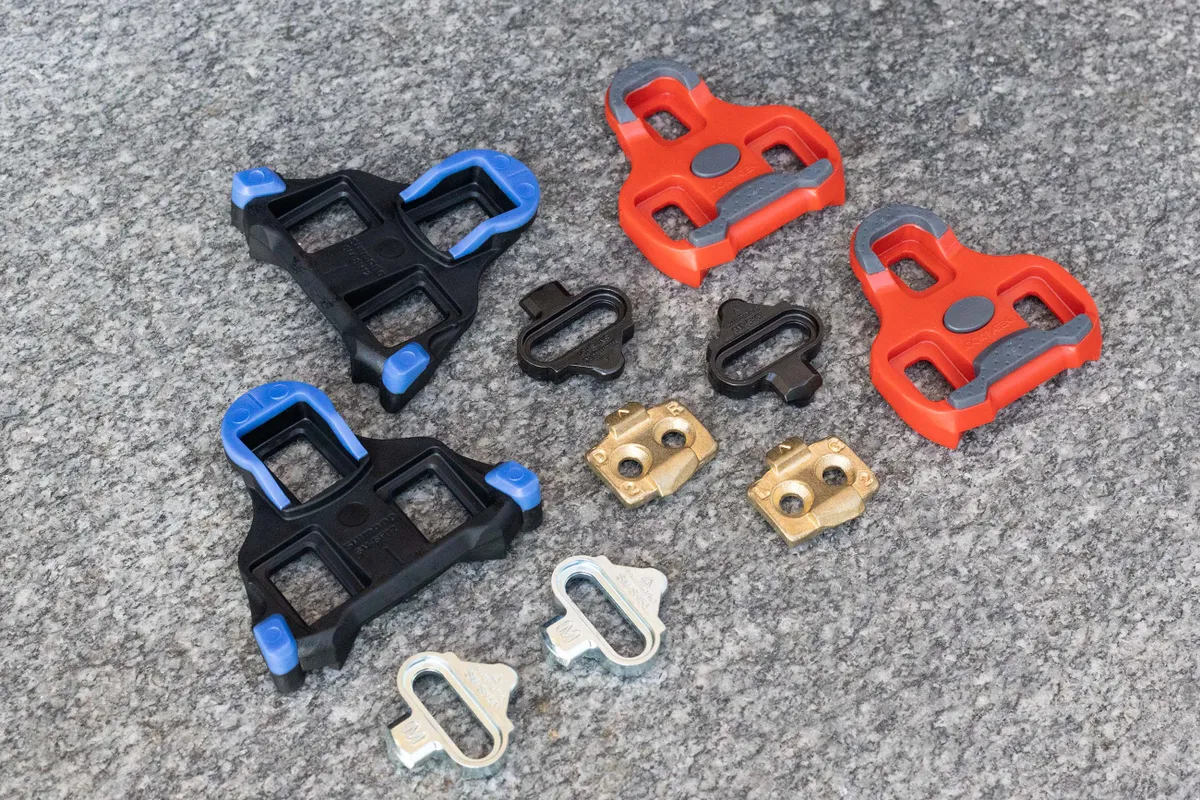
Many riders quickly come round to the benefits of clipless pedals – making the switch is a rite of passage for road cyclists – but there are advantages and disadvantages to using clipless pedals vs flat pedals.
If you are looking for a flat pedal, we have plenty of options in our guide to the best mountain bike pedals, which also includes our pick of the best double-sided SPD-style MTB and gravel pedals. You may also want to check our list of the best gravel bike pedals.
Cleats
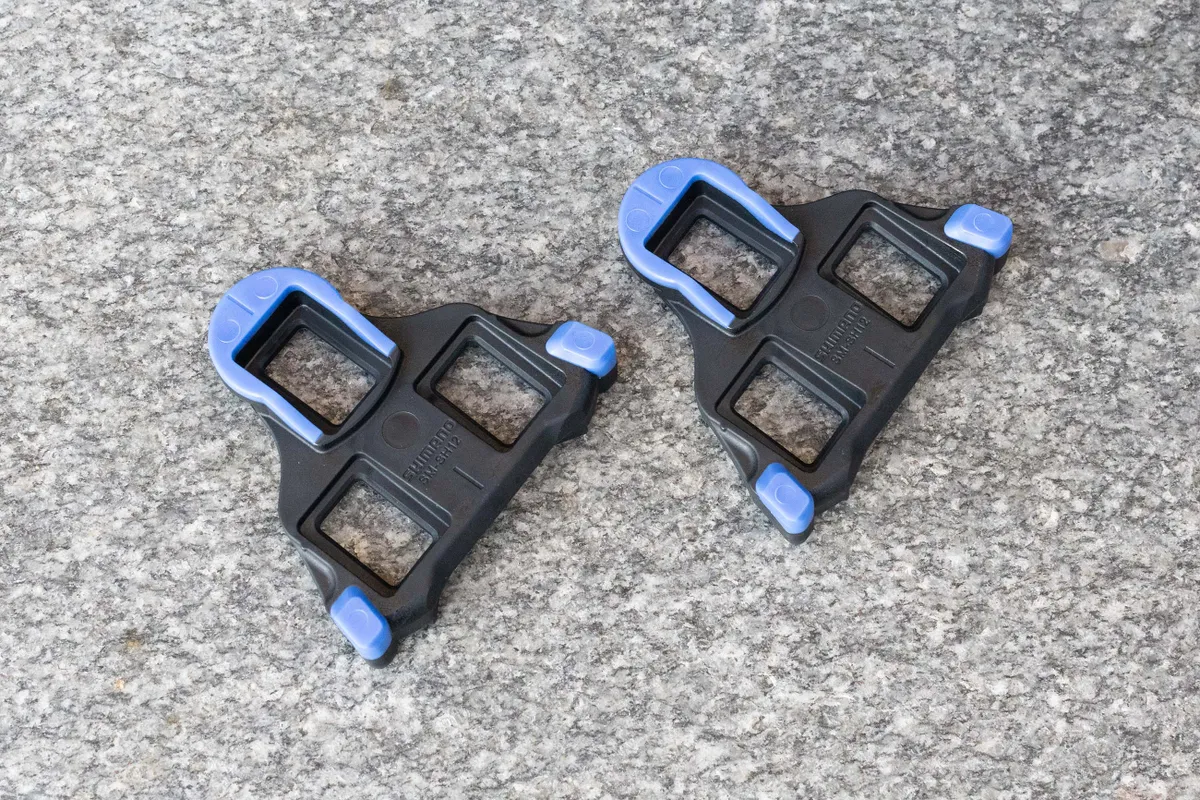
Road cleats vary in design depending on the pedal, but the majority fasten to the soles of your shoes with three bolts.
Look first came up with this three-point fastening and it's become pretty much the standard for road pedals, with Shimano, Time, Mavic and others all using the same arrangement.
Some brands, such as Shimano, use smaller cleats that fasten with two bolts. There are various reasons you might choose a smaller two-bolt cleat over a three-point fastening cleat. You can find out which would be best for you in our Shimano SPD and SPD-SL explainer.
Speedplay is the notable exception, with its four-bolt pattern (but then the US company effectively reverses the entire system by mounting the clip mechanism onto your shoes, leaving the pedals to act as the cleats).
To use these, you'll need four-bolt shoes or the adaptor, which is included with every set of Speedplay pedals.
We have a guide on how to fit and adjust cycling cleats if you are new to riding with clipless pedals or just need a refresh.
We also have a guide on when to replace your cycling cleats.
Float
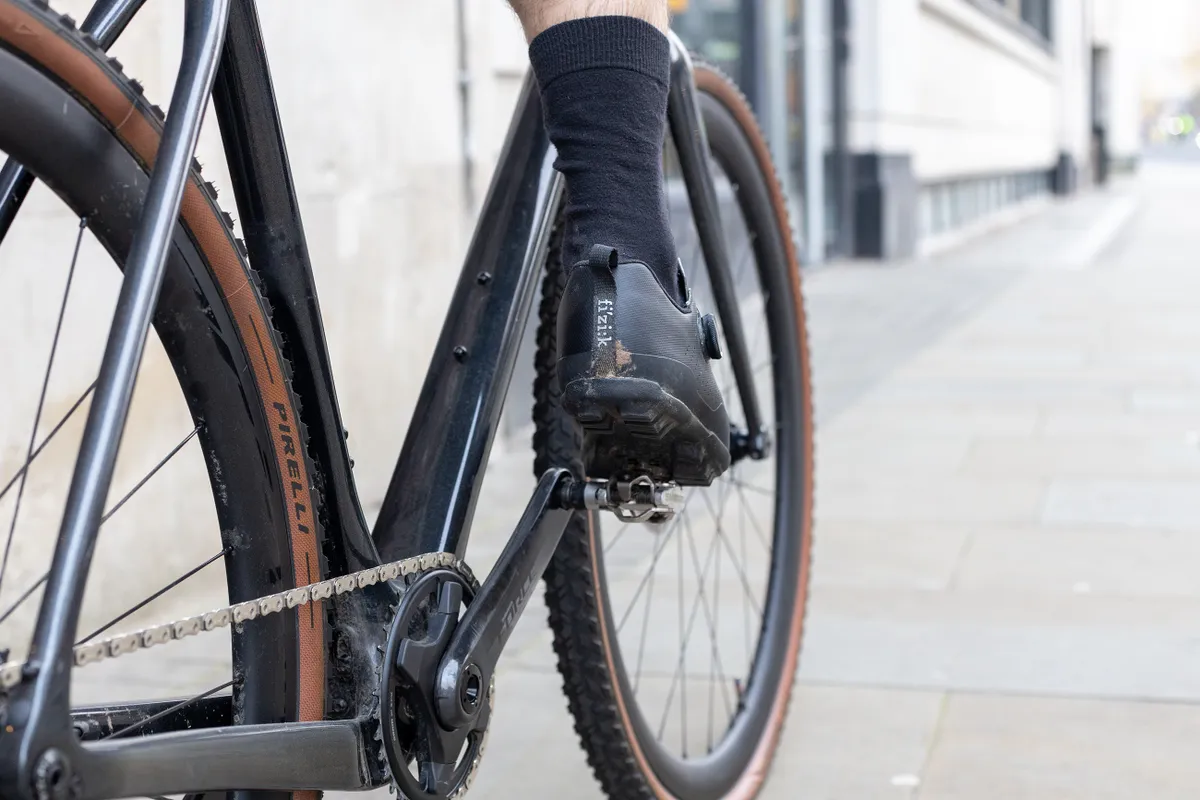
Float is measured in degrees and refers to the amount your foot can move before it's released from the pedal.
It's there to allow your feet to fall into the most natural, comfortable position while pedalling and to reduce the stress on your knees if your cleats aren't positioned perfectly.
Some cleats are 'zero-float', or fixed, which means they release your foot with only the slightest of movements. They need to be set up very carefully for the sake of your knees. Most cleats, however, offer something in the range of 3 to 9 degrees of float.
The thing to bear in mind is the more float you have, the further you have to twist your foot in order to release it.
If you're unsure about how much float you need, don't worry, your pedal choice won't lock you into one particular setting. You can experiment by running different cleats and adjusting the settings on your pedals.
Release tension
Most pedals enable you to adjust the pedals' release tension – the amount of force required to disengage your foot from the mechanism. If you're a beginner, start off with a low tension for easier release.
This will also make it easier to clip into the pedal. As you become more confident riding with clipless pedals, you can increase the tension for a more secure connection between you and your bike.
Stack height
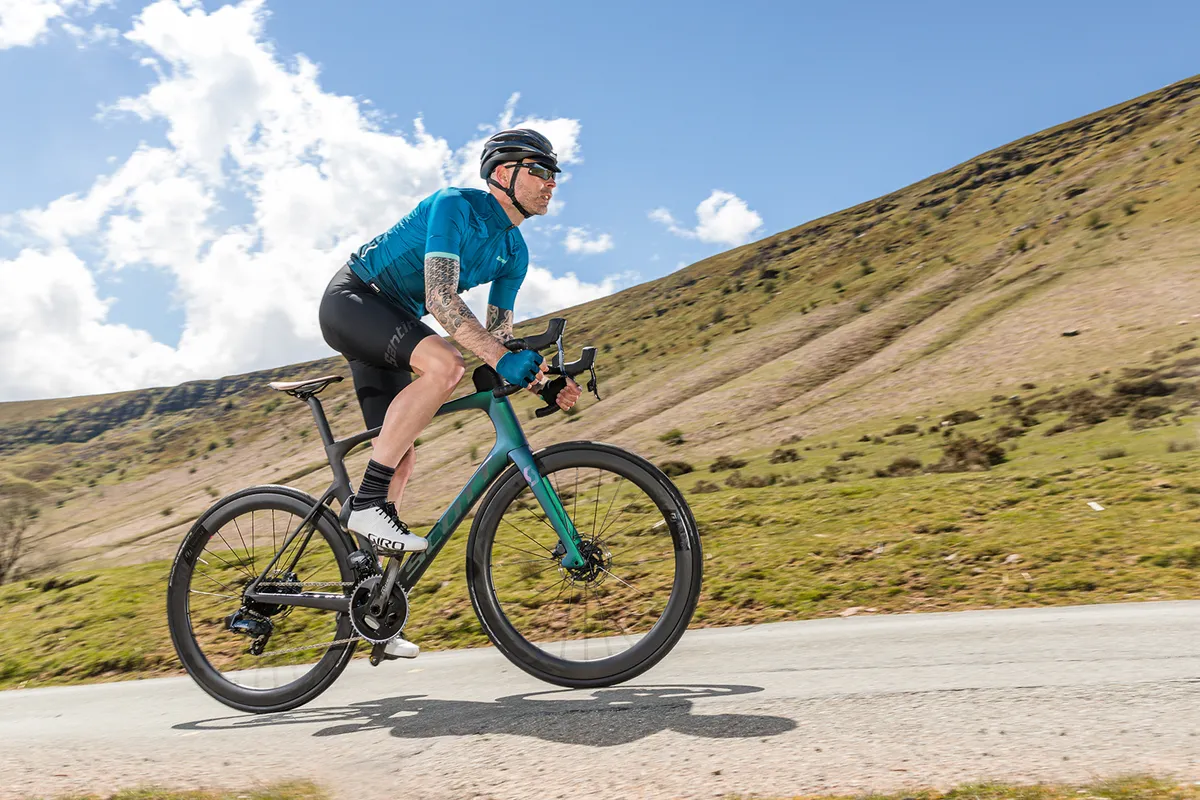
This is measured from the middle of the pedal axle to the sole of the shoe. The lower the stack height the better because it places your foot closer to the axle for the best possible efficiency.
You may need to adjust your saddle height if you change pedals, because every model has a slightly different stack height.
Q-factor
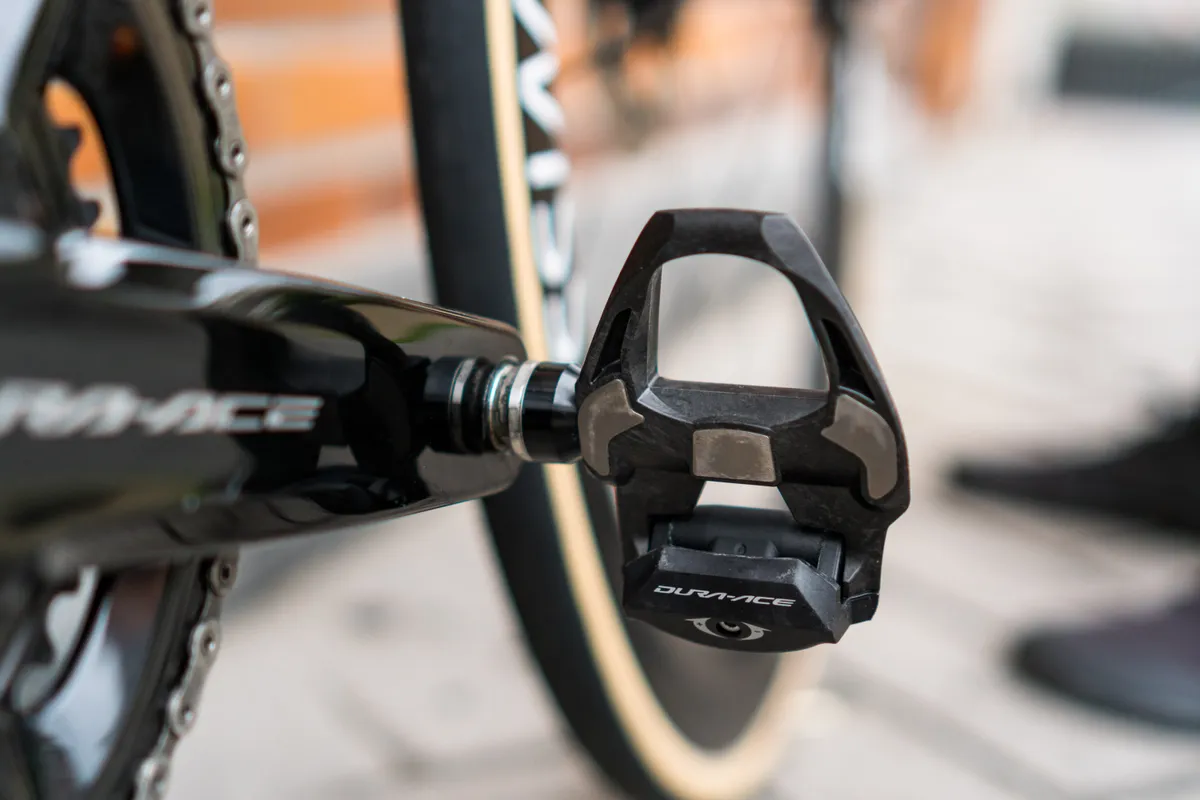
Q-Factor is the lateral distance between the edges of your two crank arms, but it is most often used to mean stance width, or the distance between your feet when pedalling.
Establishing the correct Q-Factor for you can be tricky, but if you know you need to increase your Q-Factor one way to do this is to change your pedals for ones with longer spindles.
Shimano Dura-Ace and Ultegra pedals are available with longer spindles. You can also buy spindle extenders. A more extreme – and costly – way to adjust your Q-Factor is to change your crankset.
